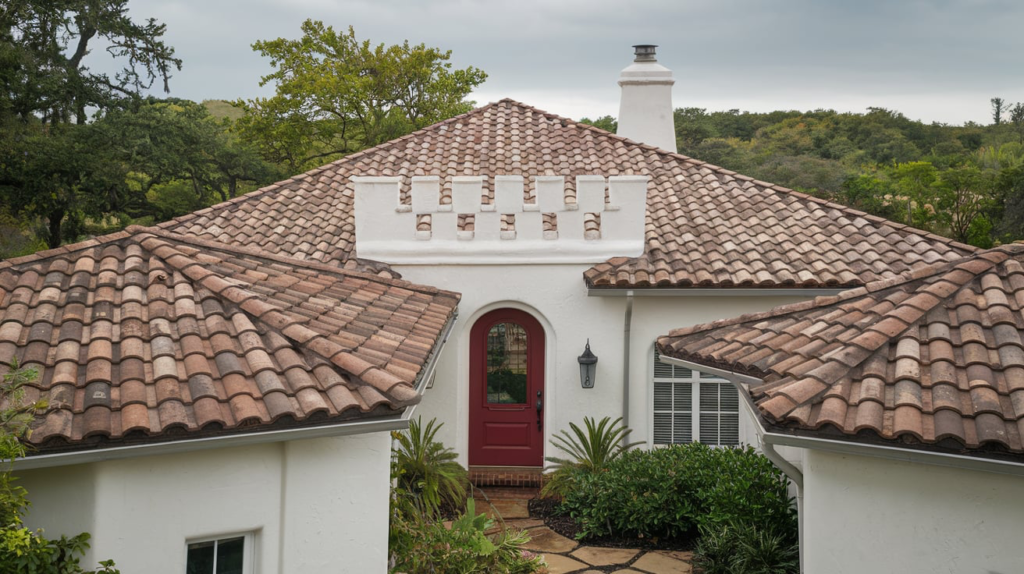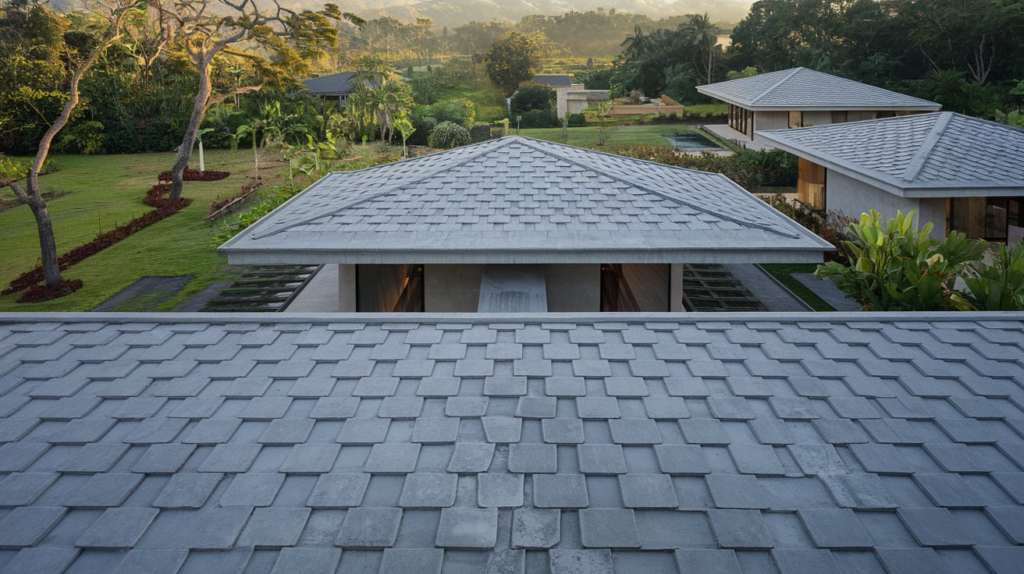Concrete tiles are a popular roofing material for Filipino homes due to their durability, affordability, and ability to withstand the country’s tropical climate. They offer excellent protection against heavy rains, strong winds, and intense sunlight, making them a practical choice for homeowners.
However, like any roofing material, concrete tiles can become damaged over time. Cracks, chips, or dislodged tiles may occur due to natural wear and tear, storms, or poor installation. Fortunately, concrete tile repair is manageable with the right tools, techniques, and knowledge.
This guide will help you identify common concrete tile problems, repair damaged tiles, and maintain your roof for long-term performance.

Common Problems with Concrete Tiles
Before diving into the repair process, it’s important to recognize the common issues that can affect concrete tiles:
• Cracked or Broken Tiles: Caused by falling debris, weather changes, or impact.
• Loose or Missing Tiles: High winds or improper installation can cause tiles to shift or fall off.
• Water Leaks: Cracked or misaligned tiles can allow water to seep into the roof.
• Moss or Algae Growth: Common in humid areas, moss and algae can discolor tiles and retain moisture.
• Wear and Discoloration: Prolonged exposure to sunlight and rain can fade the color of concrete tiles.
Tools and Materials for Concrete Tile Repair
Tools
• Hammer and chisel
• Pry bar
• Utility knife
• Tile cutter or grinder
• Ladder or scaffolding
• Safety gear (gloves, helmet, harness)
Materials
• Replacement concrete tiles
• Roofing nails or screws
• Mortar or roofing adhesive
• Sealant or waterproofing solution
• Sandpaper
Step-by-Step Guide to Repairing Concrete Tiles
Follow these steps to repair damaged concrete tiles safely and effectively:
Step 1: Inspect Your Roof
• Start by visually inspecting your roof to identify damaged or missing tiles.
• Look for cracks, loose tiles, or water stains on your ceiling, which could indicate leaks.
• Use a ladder or binoculars to assess the roof, or hire a professional for a more thorough inspection.
Step 2: Remove the Damaged Tile
• Use a pry bar to carefully lift the damaged tile, avoiding damage to the surrounding tiles.
• If the tile is secured with nails, gently remove them using a hammer or nail puller.
• Slide the tile out of position, ensuring you don’t disturb neighboring tiles.
Step 3: Clean the Area
• Remove any debris, old mortar, or adhesive from the area where the damaged tile was removed.
• Check the underlayment for tears or water damage. Replace it if necessary to maintain waterproofing.
Step 4: Prepare and Install the Replacement Tile
• Measure the space and cut the replacement tile to fit, if necessary, using a tile cutter or grinder.
• Apply mortar or roofing adhesive to the area where the new tile will sit.
• Position the replacement tile carefully, ensuring it aligns with the surrounding tiles.
• Secure the tile with roofing nails or screws, driving them into the designated holes on the tile.
Step 5: Seal and Waterproof
• Apply a sealant around the edges of the replacement tile to prevent water infiltration.
• Use a waterproofing solution or coating to enhance the durability of the repaired area.
Step 6: Inspect and Test
• Inspect the repaired area to ensure the tile is securely in place and aligned properly.
• Spray water over the roof to test for leaks and ensure the repair is watertight.
Cost of Concrete Tile Repairs in the Philippines
The cost of repairing concrete tiles can vary depending on the extent of the damage, the size of the roof, and labor costs. Below is an estimate:
Replacing a Single Tile: PHP 400 – PHP 1,000 Includes tile, adhesive, and labor.
Fixing Multiple Tiles: PHP 2,000 – PHP 5,000 (per sqm)
Depends on the extent of the damage.
Underlayment Replacement: PHP 300 – PHP 800 per sqm
Replaces waterproofing layer.
Full Roof Tile Replacement: PHP 1,500 – PHP 3,000 per sqm
Includes materials and professional labor.
Note: Prices may vary depending on the location, supplier, and contractor rates.
Tips for Maintaining Concrete Tiles
To prolong the lifespan of your concrete tile roof and minimize the need for repairs, follow these maintenance tips:
• Regular Cleaning: Remove dirt, moss, and debris to prevent moisture buildup.
• Annual Inspections: Check for cracks, loose tiles, or leaks, especially after storms or heavy rains.
• Seal Your Tiles: Apply a waterproofing sealant every few years to protect against water damage and UV exposure.
• Trim Overhanging Branches: Prevent falling branches or debris from damaging your roof.
• Avoid Walking on Tiles: Concrete tiles can crack under pressure, so use boards to distribute weight if you need to access the roof.
When to Call a Professional
While small repairs can be done DIY, there are instances where hiring a professional roofing contractor is the best option:
• Extensive Damage: If large sections of your roof are damaged, professional expertise ensures the job is done right.
• Structural Issues: If the underlayment or roof structure is compromised, a contractor can address the underlying problems.
• Safety Concerns: Working on a roof can be dangerous, especially on steep or high surfaces. Professionals have the equipment and training to work safely.
Why Concrete Tile Repair Is Worth the Effort
Investing time and effort into maintaining and repairing your concrete tile roof pays off in the long run:
• Durability: Concrete tiles can last 50 years or more with proper care.
• Weather Resistance: Repairs protect your home from water leaks and structural damage.
• Cost Savings: Addressing small issues early prevents more costly repairs in the future.

Conclusion: Keep Your Concrete Tiles in Top Condition
Concrete tiles are a durable and stylish roofing option for Filipino homes, but they require occasional repairs to remain functional and attractive. By following the steps in this guide, you can handle common issues like cracked, loose, or missing tiles and maintain your roof’s integrity.
To recap:
• Inspect your roof regularly and replace damaged tiles promptly.
• Use high-quality materials and proper techniques for long-lasting repairs.
• Perform regular maintenance to prevent moss growth, leaks, and discoloration.
For large-scale repairs or professional assistance, contact our expert Filipino roofing contractors today. Let us help you keep your concrete tile roof strong, safe, and beautiful!
